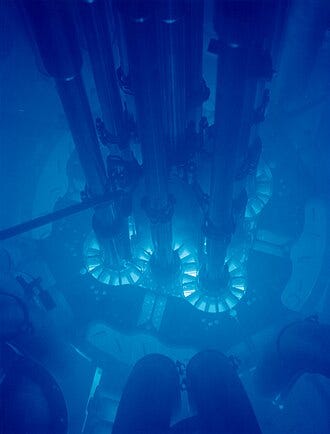
There are a lot of factors that make space travel extremely challenging. But maybe first among them is that it just takes so darn long to get anywhere. The Moon often hangs low on the horizon looking like you could reach out and touch it, yet it takes three days to get there. Estimates are that in a best case scenario, given current technology, Mars could be a nine-month journey. And those are in the neighborhood.
The chemical propulsion systems and solar collectors that power so much of space travel today will not be adequate for long-duration missions to distant destinations. There is a lot of research being done in the area of ion thrusters and solar sails, but maybe the most elegant solution is a technology that has been around for nearly a century: nuclear power. It's an answer that could potentially have multiple applications for space exploration.
Unlocking the Atom: The Basics of Nuclear Power
Before diving into the specifics of nuclear power in space, lets look at the fundamental principles that govern this technology. At the heart of nuclear power lies the PROCESS of nuclear fission, where a heavy atomic nucleus splits into smaller fragments, releasing an immense amount of energy. This energy can be harnessed to generate heat, which is then converted into electricity or used directly for propulsion.
In a typical nuclear reactor designed for terrestrial use, uranium-235 (U-235) serves as fuel. When a neutron collides with a U-235 nucleus, it splits the nucleus into two smaller fragments, releasing additional neutrons and a significant amount of energy. This chain reaction is carefully controlled to produce a steady flow of heat, which is used to generate steam that drives turbines connected to electrical generators.
Space-based nuclear power systems, however, operate under different constraints and requirements. They must be compact, lightweight, and capable of withstanding the harsh conditions of space while providing reliable energy over extended periods. This has led to the development of specialized designs tailored for extraterrestrial environments.
Radioisotope Thermoelectric Generators: The Workhorses of Deep Space
One of the most successful applications of nuclear power in space is the Radioisotope Thermoelectric Generator (RTG). RTGs utilize the natural decay of radioactive isotopes, such as plutonium-238, to generate heat. This heat is then converted into electricity using thermocouples, which exploit the Seebeck effect—a phenomenon where a temperature difference across a material generates an electric voltage.
The principle behind RTGs is deceptively simple yet remarkably effective. A pellet of radioactive material is placed in thermal contact with a series of thermoelectric converters. As the isotope decays, it releases heat, which travels through the converters and creates an electrical potential difference. This electricity can then be used to power spacecraft systems, instruments, and communication equipment.
The technology has been around for a while. The Voyager missions, launched in 1977, each carry three RTGs, and these probes have ventured far beyond the outer planets into interstellar space. Over the course of their missions, they have transmitted invaluable scientific data back to Earth for over four decades. Their longevity is a testament to the reliability and endurance of RTG technology.
Mars rovers like Curiosity and Perseverance also rely on RTGs for their power needs. The harsh Martian environment, with its extreme temperatures and dust storms, makes solar panels less practical for long-term missions. RTGs provide a steady source of energy, enabling these robotic explorers to conduct comprehensive geological and chemical analyses of the Red Planet's surface.
However, RTGs are not without their limitations. They produce relatively low power outputs—typically in the range of hundreds of watts—and their efficiency decreases over time as the radioactive isotope decays. Moreover, the production of plutonium-238 is a complex and expensive process, with limited global supplies available. These factors have led researchers to explore alternative nuclear technologies for space applications.
Keep reading with a 7-day free trial
Subscribe to The Journal of Space Commerce to keep reading this post and get 7 days of free access to the full post archives.



